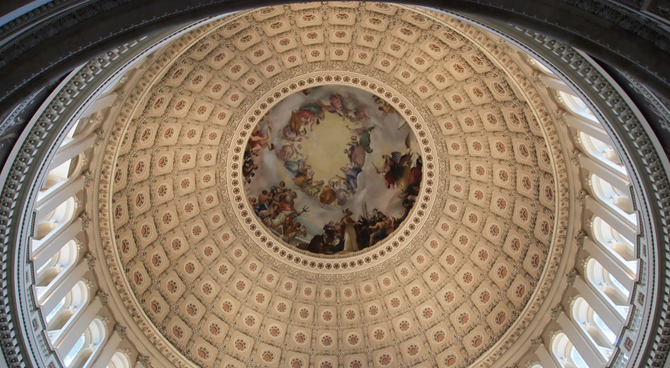By Phil Gramm and Glenn Hubbard as appeared in Wall Street Journal on June 7, 2012
Given last week’s grim jobs report, it’s now clearer than ever that the November election will be a referendum on the economy. Has the president’s program worked? Does Mitt Romney have a better program to promote job creation and prosperity? Fortunately, Americans have evidence that will allow them not only to judge President Obama’s economic performance, but also to compare that performance with Mr. Romney’s proposed alternative.
Twice in postwar America, deep recessions have driven the unemployment rate to 10%. In the 1981-82 recession, the unemployment rate soared to 10.8%. In the 2007-09 recession, it peaked at 10%.
Both downturns were rooted in financial convulsions. The 1981-82 recession was induced by restrictive monetary policy aimed at breaking the back of double-digit inflation and interest rates, which generated a housing and savings-and-loan crisis. The more recent recession resulted from excessive government intervention to increase homeownership by expanding subprime housing loans, on which substantial leverage was built. The resulting wave of defaults damaged the base of the banking system.
Fifty-three months after the start of the 1981-82 recession, total employment in the U.S. was up 7.5 million, or almost 7.5% higher than when the recession began. The labor-force participation rate rose to 65% from 63.8%, as optimism about the future pulled potential workers into the job market. Real per capita gross domestic product increased by $2,870 and was 11% higher than when the recession started.
Fifty-three months after the start of the 2007-09 recession, however, total employment in the U.S. is still down four million jobs, or 2.7% lower than when the recession began. The labor-force participation rate has dropped to 63.8% from 66%, as discouraged workers have exited the labor market. Real per capita GDP has declined by $964 and is 2.2% lower today than when the recession began.
If the current economy had matched the job-creation rate of the recovery from the 1981-82 recession, there would be 15 million more Americans at work today, 8.3 million more Americans would be in the labor force, and per capita GDP would be $5,792 higher than it is today.
The superior job creation and income growth following the 1981-82 recession are all the more striking as they occurred against the backdrop of restrictive monetary policy. The Federal Reserve tried to beat back double-digit inflation in the early 1980s with tight money. Prime interest rates averaged 11.9%, and the three-year Treasury note rate averaged 11.2% during the recovery. By contrast, today’s Fed has an expansive monetary policy with record low interest rates, a 3.2% prime rate and a 0.3% three-year Treasury note rate.
The recessions of 1981-82 and 2007-09 presented the greatest economic-policy challenges in postwar America. So what accounts for the explosion of growth after the former and not the latter? Policy plays a role.
In the early 1980s, President Ronald Reagan’s policies were aimed not just at overcoming the 1981-82 recession, but overcoming the stagnation of the 1970s. By reducing domestic discretionary spending, setting out a three-year program to reduce tax rates, and alleviating the regulatory burden, Reagan sought to make it profitable to invest in America again. He clearly succeeded.
President Obama’s polices would, by contrast, make permanent a significant surge in federal spending and raise marginal tax rates on earnings and entrepreneurial returns. Meanwhile, his health-care and financial reforms will expand regulation and government involvement in the economy to an extent not seen during peacetime since the Great Depression. Despite a massive fiscal stimulus, the lowest interest rates in U.S. history, and $5 trillion of new federal debt, we are still mired in a recovery so weak that many Americans believe we are still in a recession.
Mr. Romney’s economic principles are strikingly similar to Reagan’s. He would reduce the size and cost of the federal government. He champions a reduction in marginal tax rates in the context of a general tax reform. Particularly powerful are his proposals to reduce marginal tax rates on business income earned by corporate and unincorporated businesses alike. His goal, like Reagan’s, is to make it profitable to invest in job creation.
Despite growing evidence that government spending and mounting government debt are not stimulating growth, President Obama recently urged the Europeans to stimulate their economies with more deficit spending. Europe needs growth-oriented policies, to be sure, but does the president believe that more government spending and ever-mounting national debt promote lasting growth? If more government spending and borrowing were the keys to growth, Greece would be experiencing a new Golden Age.
The difference between the Obama and Romney policies reflects a fundamental disagreement about the engine that drives the American economy. Mr. Obama believes government is the driver of growth, and that short-term stimulus and greater regulation is what the country needs. Mr. Romney believes growth comes from the private sector and government should get long-term policy right—restraining federal spending to avoid tax hikes, reforming the tax code, and regulating more wisely.
In a recent criticism of Mr. Romney’s experience as CEO of the private-equity firm Bain Capital, Mr. Obama said the president’s job is “not simply to maximize profits.” He warned, “if your main argument for how to grow the economy is ‘I knew how to make a lot of money for investors,’ then you’re missing what this job is about.” But aren’t private-sector jobs generated by profits?
Jobs are sustainable only when profits are sustainable. The American economy was built on the profits earned by serving consumers, and it will only be saved by earning profits. The president apparently does not understand that basic point.
Do voters?
Mr. Gramm, a former U.S. senator, is senior partner of US Policy Metrics. Mr. Hubbard, dean of Columbia Business School, was chairman of the Council of Economic Advisers under President George W. Bush. He is an economic adviser to Mitt Romney.





